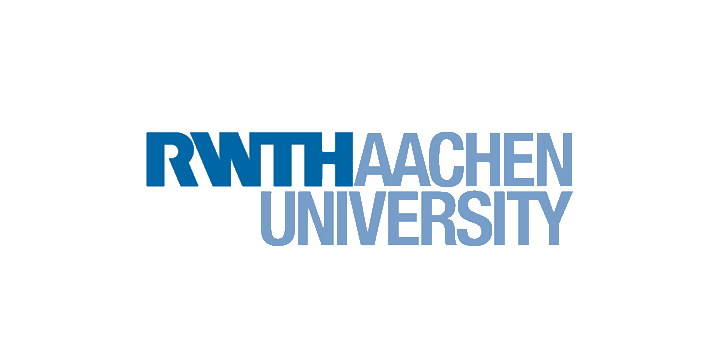RWTH: Lift-off for the Center for Vertical Mobility
In the Rhenish Revier, RWTH Aachen University and partners are launching a nationwide unique competence and test center for networked and automated vertical mobility.
How can unmanned micro-aircraft safely transport urgent medical supplies and support rescue workers in the search for missing persons? How will air taxis that take off vertically bring medical staff to patients? The new Center for Vertical Mobility (CVM) in Aldenhoven will address these and other questions about networked and automated vertical mobility. In cooperation with the Institute for Flight System Dynamics at RWTH Aachen University, other university institutes and partners from industry, an interdisciplinary competence and test center that is unique in Germany is being created in the Rhenish area.
At a symbolic lift-off on the premises of the Aldenhoven Testing Center (ATC), Ina Brandes, Minister of Transport of the State of North Rhine-Westphalia, and Professor Andreas Pinkwart, Minister of Economic Affairs, Innovation, Digitization and Energy of the State of North Rhine-Westphalia, together with the Rector of the RWTH, Professor Ulrich Rüdiger, launched the first unmanned flight. All those involved emphasized that the project is an important part of structural change in the region.
Mobility is a key component
“Mobility is a key component that will have a lasting effect on and shape the future development of population and economic structures in rural areas. Vertical mobility has the potential to get to any location without the need for any special infrastructure on the ground and to offer transport or traffic services at any time and in any weather,” explains Professor Dieter Moormann, head of the Institute of Flight System Dynamics. The start and monitoring of the premiere flight as well as the transmission of the image data were ensured via Vodafone’s 5G network, which is being expanded as “5G.air” for highly dynamic aviation applications at the CVM.
The work focuses on research, development and operation of unmanned aircraft capable of vertical take-off, for example for the transport of urgent goods, for data acquisition/digital production and for the support of rescue services. It is also about testing safe, automated operation of air taxis that can take off vertically. All flight systems take off and land vertically. A runway is not required for this, but a so-called U-Space as an airspace in which safe simultaneous operation of these air traffic participants is also possible with the manned aviation that is common today. The CVM sees itself as a supplement to the research activities at the Aeropark Aachen-Merzbrück and at the innovation airport in Mönchengladbach.
Also on the agenda is the research and optimization of so-called airborne wind power plants, which generate energy efficiently and sustainably using high-altitude winds far above the blade tips of today’s wind turbines.
“Center for Vertical Mobility” strengthens the role of North Rhine-Westphalia
Minister of Transport Ina Brandes: “North Rhine-Westphalia is the home of Mobility 4.0 with self-driving buses in scheduled services, automated inland waterways, state-wide e-tariff for buses and trains or quiet and emission-free e-aircraft that take off in Aachen-Merzbrück. In this excellent research region around the RWTH and the Rheinisches Revier there is now the first test center in Germany for transport drones and autonomously operated air taxis, which can take off and land vertically quickly and in the smallest of spaces. The new ‘Center for Vertical Mobility’ strengthens the role of North Rhine-Westphalia as a pioneer in the development of future air traffic. I am particularly pleased that emergency aircraft are also being researched to save lives.”
Economics and Innovation Minister Professor Andreas Pinkwart: “Tomorrow’s aviation will not only be more climate-friendly and quieter, but will also provide important cross-sector impulses for many other applications. In North Rhine-Westphalia, we are ideally positioned to play a pioneering role here: We combine excellent research with innovative companies from the aviation industry and many of the key technologies required for this. I am convinced that the competence and test center will create a location that develops and tests new technologies and helps them get off the ground. Airborne wind power plants are a great example of this: the more efficient use of high-altitude winds harbors great potential for the expansion of renewable energies.”
The Institute for Flight System Dynamics is already involved with other institutes at the university in research projects on innovative air mobility. These are funded by the federal government or the European Union. These include the projects “EULE” for European transport solutions for medical goods, “Grenzflug+” for the cross-border search for injured persons, “SAFIR-med”, also for medical care and “FlutNetz”, a project for emergency care for snakebite victims from flooded areas in Bangladesh. At the CVM, this research is combined with other projects.
“RWTH stands for an active approach to the unknown. This also includes research into flight systems that do not require a runway because they can take off and land vertically. The overall project of this center is an important contribution to the structural change in the Rhenish mining area. I am confident that research in this field will go far and give us answers to some of the pressing questions of our time,” explains RWTH Rector Professor Ulrich Rüdiger.

